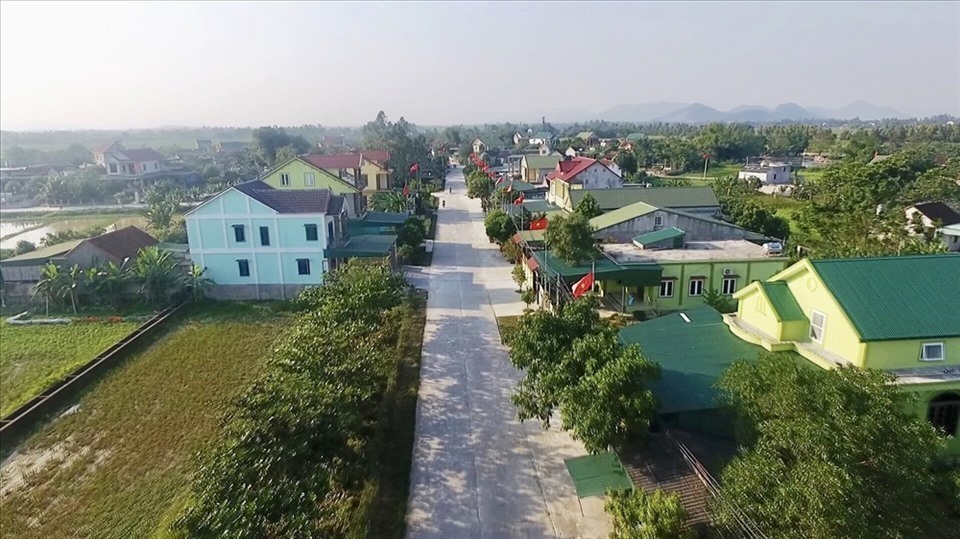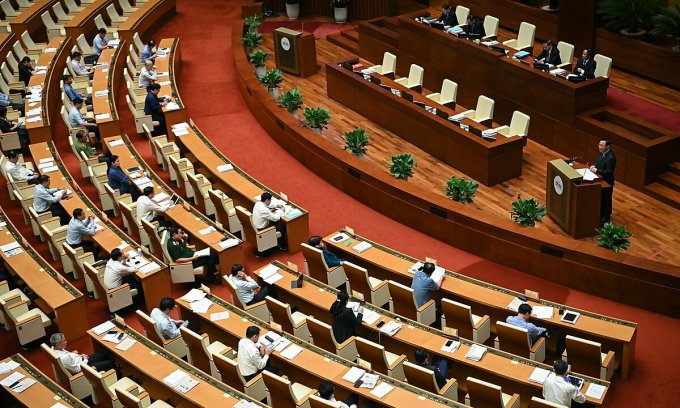How much residential land does each household get in Vietnam?

Residential land or residential land in order to be recognized and granted a certificate of land use right, in addition to the conditions on papers, the subject also has the conditions on the quota. Accordingly, for the land part of the land allocation quota, recognition of residential land use rights will be accepted by the state. With the excess of the limit, depending on the case, the land user will be changed the land use purpose or recognized as a type of land other than residential land. So about the matter “How much residential land does each household get in Vietnam?” Let’s find out with LSX in the article below.
Legal grounds
- Land Law 2013
What is residential land?
Based on the purpose of use, land is classified into 03 groups: non-agricultural land, agricultural land and unused land, specifically:
– The agricultural land group includes: Land for annual crops, including land for rice cultivation and land for other annual crops; land for planting perennial crops; production forest land; protection forest land; special-use forest land; aquaculture land; salt land; other agricultural land.
– Non-agricultural land group includes: Residential land; land for construction of the agency’s headquarters; land used for defense and security purposes; land for construction of non-business works, including land for construction of offices of non-business organizations; land for construction of cultural, social, medical, educational and training facilities, physical training and sports, science and technology, diplomacy and other non-business works; non-agricultural production and business land, including land in industrial parks, industrial clusters and export processing zones; commercial land, services…
– Unused land group includes types of land for which the purpose of use has not been determined.
Currently, according to the land law, there is no type of land called residential land.
Residential land is a common way people call residential land, including residential land in rural areas (symbolized as ONT), residential land in urban areas (symbolized as ODT). Therefore, residential land is not the name of any type of land specified in the land law, but the name used by ordinary people.
Pursuant to Clause 1, Article 125 of the 2013 Land Law, residential land used by households and individuals is the type of land that can be used stably and for a long time.
What types of residential land are there?
When it comes to residential land (residential land), according to the 2013 Land Law, it includes rural land and urban residential land. Specifically:
Urban residential land
Pursuant to Article 144 of the 2013 Land Law, urban residential land (ODT) includes land for construction of houses, construction of works in service of life, gardens and ponds in the same parcel of land in an urban residential area. , in accordance with the land use planning, urban construction planning approved by the competent state agency.
This type of land has other separate policies in the land law from taxes, land use limits, building permits.
Urban residential land has many characteristics similar to ordinary residential land such as:
– Managed by districts, cities, towns, planned residential areas of the new urban area….
– Residential land in urban areas will include:
+ Land for construction of works in service of life and construction of houses; or
+ The garden and pond are located in the same land plot in the urban area.
Rural residential land
Pursuant to Article 143 of the 2013 Land Law, rural residential land (OTN) is residential land currently used by households and individuals in rural areas, including land for construction of houses and construction of works in service of daily life. , gardens and ponds in the same land plot in a rural residential area, in accordance with the master plan on land use and construction planning of rural residential quarters already approved by competent state agencies.
This type of land is usually managed by the commune level located in rural areas. Note, with land located in urban areas being planned to go to the city, it is no longer called rural land.
Rural land is prioritized for permitting the construction of gardens and ponds and has the following characteristics:
– Having cadastral boundaries located in rural areas and managed by communes.
– There are tax policies as well as separate planning.
How much residential land does each household get in Vietnam?
According to the land law, there are regulations on land allocation quotas and recognition of residential land use rights for households and individuals. in (residence).
In essence, it can be understood that the residential land allocation quota is the limit on the land area that the competent State agency allocates land to the people.
The residential land allocation limit includes a maximum limit and a minimum limit. In particular, the minimum land limit is the lowest limit allowed by law for land users to be allocated land and recognized land use rights. On the contrary, the maximum limit is the maximum area that people can be allocated, recognized, if exceeding this limit, the user of residential land will have his rights restricted according to the provisions of law.
– Regarding the quota for allocation of residential land in rural areas:
Pursuant to Clause 2, Article 143 of the Land Law 2013 stipulates that based on the actual situation of the local land fund and the rural development planning approved by the competent State agency, the People’s Committee of the province shall decide determine the quota of land allocated to each household or individual to build houses in the countryside;
– Regarding the quota of residential land allocation in urban areas:
Pursuant to Clause 4, Article 144 of the 2013 Land Law, which stipulates that on the basis of urban construction planning, land use planning and local land fund, the People’s Committee of the province shall stipulate the quota of residential land allocated to users. land used by private families and individuals to build houses;
Based on the actual situation, socio-economic conditions and local land fund, the residential land allocation quota will be decided by the provincial People’s Committee.
Thus, the limits of land allocation and recognition of residential land for individuals in localities are different. Therefore, to know exactly how much residential land an individual can own, we must base on the specific regulations of each province and city.
Residential land quotas in some provinces and cities
Below is a reference to some regulations on residential land (residential land) quotas in Hanoi, Ho Chi Minh City and Thanh Hoa province.
- Hanoi City
Pursuant to Decision 20/2017/QD-UBND dated June 1, 2017 of the Hanoi People’s Committee stipulating quotas for allocation of residential land and workers:
– For resettlement residential land; land allocation for rural housing in rural residential areas:
Area Minimum level Maximum level
Wards 30 m2 90 m2
Area of town and communes bordering districts 60 m2 120 m2
Plain communes 80 m2 180 m2
Midland communes 120 m2 240 m2
Mountain communes 150 m2 300 m2
– In case of residential land with gardens and ponds:
+ The districts of Dong Da, Hoan Kiem, Ba Dinh, Hai Ba Trung, Tay Ho, Thanh Xuan, Cau Giay, Long Bien, Hoang Mai are: 120 m2 (One hundred and twenty square meters)
+ The districts of North Tu Liem, Nam Tu Liem and Ha Dong are: 180 m2 (One hundred and eighty square meters)
+ Son Tay town: the wards are: 180 m2 (One hundred and eighty square meters); the communes of Son Tay town are: 300 m2 (Three hundred square meters)
+ Communes bordering districts and towns: 200 m2 (Two hundred square meters)
+ Communes in the delta are: 300 m2 (Three hundred square meters)
+ The midland communes are: 400 m2 (Four hundred square meters)
+ The mountainous communes are: 500 m2 (Five hundred square meters)
- Ho Chi Minh City
Pursuant to the Decision No. 18/2016/QD-UBND dated May 16, 2016 of the People’s Committee of Ho Chi Minh City stipulating:
+ Districts of Binh Thanh, Go Vap, Phu Nhuan, Tan Phu, Tan Binh, Districts 1, 3, 4, 5, 6, 8, 10, 11 not exceeding 160m2/household, individual (One hundred and sixty square meters)
+ Thu Duc, Binh Tan, district 2, 7, 9, 12 and townships of districts: Hoc Mon, Binh Chanh, Cu Chi, Nha Be not exceeding 200m2/household, individual (Two hundred square meters)
+ Urban development planning area not exceeding 250m2/household or individual (Two hundred and fifty square meters)
+ Can Gio district and rural residential areas in communes of Hoc Mon, Binh Chanh, Cu Chi, Nha Be districts not exceeding 300m2/household, individual (Three hundred square meters)
- Thanh Hoa Province
According to Articles 3 and 4 of the Regulations issued together with Decision 4463/2014/QD-UBND, the residential land allocation limit for each household and individual is prescribed as follows:
– Urban land:
+ Up to 90 m2/household in wards of cities and towns;
+ Up to 100 m2/household in a town in a delta district;
+ Maximum 120 m2/household in town in mountainous district.
– Rural land:
+ For communes belonging to
Services of LSX
Prestigious professional services: Firstly, the team of consultants and consultants for many years in the field of civil status, and customer support.
On-time: Certainly, with the motto “Get your lawyer right at your fingertips”, we ensure the service always performs on time. The rights and interests of customers always come first.
Cost: Besides, LSX’s service costs are highly competitive; depending on the nature of the particular case. So, we want our guests to have the best possible service experience. Therefore, costs which guaranteed to be the most suitable and economical for customers.
Confidentiality of client information: Finally, all brand information of client LSX will be 100% confidential.
Please contact us immediately if you have any questions about “How much residential land does each household get in Vietnam?”
Contact LSX
Finally, hopefully the information in the article will provide helpful information for readers and help you solve the problem “How much residential land does each household get in Vietnam?” At the same time, LSX Law firm always has leading lawyers and legal consultants who will help you in legal matters of life. If you have any need, please get in touch with us via hotline: +84846175333 or Email: [email protected]
Please see more
- Regulations on resident land limit under Vietnam law
- Where to pay non-agricultural land tax under Vietnam law?
- Can production forest land mortgage with bank loans in Vietnam?
Frequently asked questions
According to Article 5 of the Regulation promulgated together with Decision 4463/2014/QD-UBND (amended by Clause 2, Article 1 of Decision 4655/2017/QD-UBND), the recognition limit for residential land is for the case of a land plot. having gardens and ponds are regulated as follows:
In case the land parcel with gardens, ponds attached to houses was formed from December 18, 1980 to before July 1, 2004 and the current land user has one of the following land use right documents: defined in Article 100 of the 2013 Land Law and Article 18 of Decree 43/2014/ND-CP dated May 15, 2014 of the Government, if the document does not specify the residential land area, the residential land area shall be determined as follows: as follows:
Ward area: 125 m2/household
Plain town area: 150 m2/household
Mountain town area: 200 m2/household
Plain commune area: 200 m2/household
Mountainous commune: 400 m2/household
Pursuant to Points d and e, Clause 1, Article 57 of the 2013 Land Law, all types of land that want to be converted to residential land (residential land) must obtain permission from a competent state agency.
In other words, only when there is a decision to change the land use purpose of the district-level People’s Committee, will households and individuals build houses on different types of land after changing the use purpose to residential land.
In addition, according to Article 52 of the 2013 Land Law, the grounds for permitting the change of land use purpose are as follows:
“1. The annual land use plan of the district has been approved by the competent state agency.
Demand for land use is expressed in investment projects, applications for land allocation, land lease, change of land use purpose.”
Thus, the district-level People’s Committee only allows households and individuals to move from agricultural land or non-agricultural land to residential land when the following two conditions are met:
The district’s annual land use plan allows the conversion to residential land (if not, it must wait).
There is an application for change of land use purpose.
How does residential land exceed the limit for paying land use levy? The difference between the case of using residential land within the limit and exceeding the limit is that the land use levy is payable and calculated in different ways, specifically:
For the land within the quota, it is possible to not have to pay land use levy; In case of payment, the land use levy shall be calculated according to the land price in the land price list promulgated by the People’s Committee of the province (province or city under central authority).
For the allocated area in excess of the quota, the land use fee must be paid and calculated according to the specific land price, so the payable amount will be higher if the same area unit is used.
Conclusion: So the above is How much residential land does each household get in Vietnam?. Hopefully with this article can help you in life, please always follow and read our good articles on the website: lsxlawfirm.com




